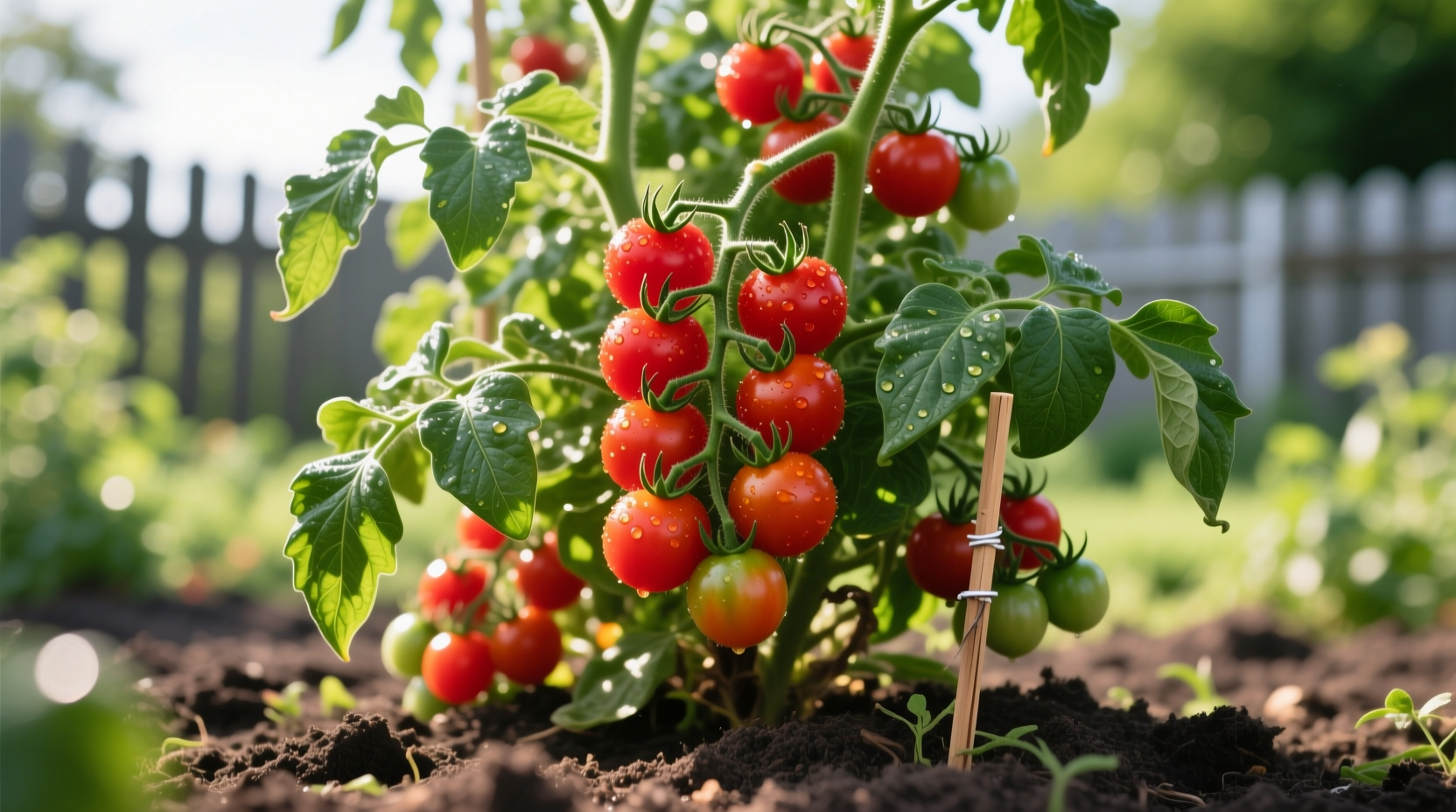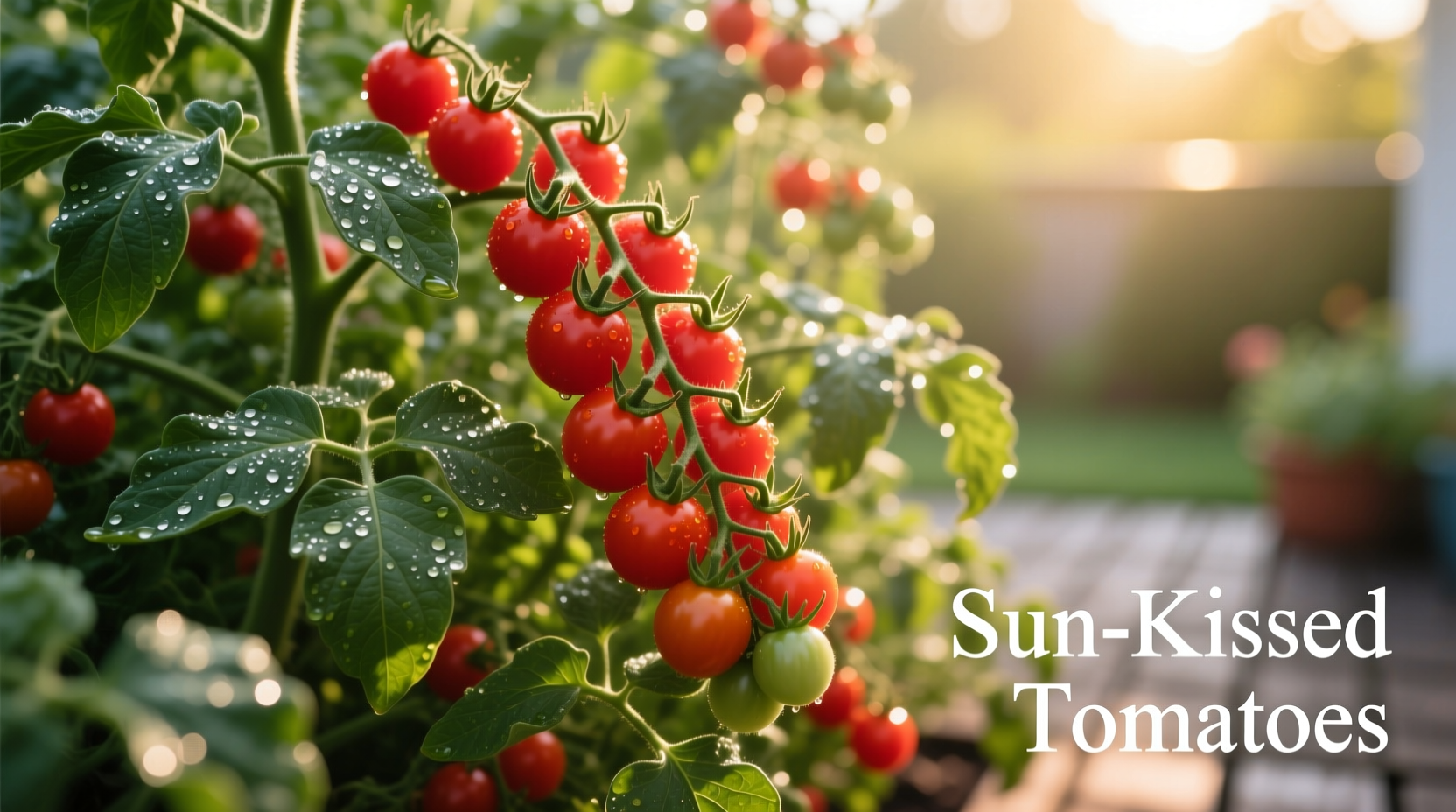Discover why cherry tomato bushes are becoming the go-to choice for home gardeners seeking reliable, space-efficient tomato production. Unlike sprawling indeterminate varieties that grow continuously throughout the season, determinate cherry tomato bushes complete their growth cycle within a defined period, delivering a concentrated harvest perfect for preserving or sharing with neighbors.
Understanding Cherry Tomato Bush Characteristics
Determinate cherry tomato varieties follow a predictable growth pattern that makes them exceptionally manageable for gardeners with limited space. These plants develop a terminal flower cluster that stops vertical growth, typically reaching 3-4 feet in height. This biological feature creates naturally compact plants that require minimal support compared to their vining cousins.
According to research from the University of Minnesota Extension, determinate varieties allocate more energy to fruit production rather than vegetative growth, resulting in earlier harvests that come all at once. This characteristic makes bush tomatoes particularly valuable for gardeners seeking tomatoes for canning or sauce-making who want a single large harvest rather than a continuous supply.
| Feature | Cherry Tomato Bushes | Vining Cherry Tomatoes |
|---|---|---|
| Growth Habit | Determinate (fixed height) | Indeterminate (continuous growth) |
| Typical Height | 3-4 feet | 6-10 feet |
| Harvest Period | Concentrated 2-3 week window | Continuous throughout season |
| Support Needs | Minimal (small cages) | Substantial (tall stakes/cages) |
| Ideal For | Containers, small spaces, canning | Gardens with ample space, fresh eating |
Top 5 Cherry Tomato Bush Varieties for Home Gardens
When selecting cherry tomato bushes for your garden, consider these proven performers that deliver exceptional flavor and productivity:
- Patio Princess - Developed specifically for container gardening, this compact variety (18-24 inches tall) produces 1-inch fruits even in 12-inch pots. Yields begin approximately 65 days after transplanting.
- Tiny Tim - A dwarf heirloom reaching only 12-18 inches in height, perfect for windowsill gardening. Produces abundant 1-inch fruits on plants that thrive in 6-8 inch containers.
- Window Box Roma - Though technically a plum tomato, this determinate variety works beautifully for small-space cherry tomato production with its compact 2-foot stature and high yields.
- Florida Basket - Features trailing growth habit ideal for hanging baskets, with vines cascading up to 3 feet while maintaining determinate fruiting characteristics.
- Sub-Arctic Plenty - An early producer (53 days) that performs exceptionally well in cooler climates where longer-season varieties might struggle to ripen.

Planting Guide for Maximum Productivity
Success with cherry tomato bushes begins with proper planting techniques. Follow this timeline for optimal results:
6-8 Weeks Before Last Frost
Start seeds indoors using seed-starting mix in 3-4 inch pots. Maintain soil temperature at 70-80°F for best germination. Provide 14-16 hours of light daily using grow lights positioned 2-3 inches above seedlings.
2 Weeks Before Transplanting
Begin hardening off seedlings by gradually exposing them to outdoor conditions. Start with 1-2 hours of morning sun, increasing exposure daily while monitoring for wind damage.
Transplanting Time
Plant in well-draining soil after all danger of frost has passed and night temperatures consistently stay above 50°F. Bury stems up to the first set of true leaves to encourage additional root development. Space plants 24-36 inches apart in garden beds or use appropriately sized containers (minimum 5 gallons for most varieties).
Care Requirements Throughout the Growing Season
Cherry tomato bushes thrive with consistent care that addresses their specific needs:
Watering Schedule
Provide 1-1.5 inches of water weekly, increasing during fruit set and hot weather. Water at soil level early in the day to prevent fungal diseases. Container plants typically require daily watering once established. According to Oregon State University Extension, inconsistent watering is the primary cause of blossom end rot in tomatoes.
Fertilization Strategy
Apply balanced fertilizer (10-10-10) at planting time, then switch to a low-nitrogen, high-phosphorus formula (5-10-5) when flowers appear. Container plants benefit from bi-weekly liquid feeding with tomato-specific fertilizer throughout the fruiting period.
Pest and Disease Management
Monitor regularly for common issues:
- Aphids: Spray with strong water jet or insecticidal soap
- Hornworms: Hand-pick or use BT spray
- Blossom end rot: Maintain consistent soil moisture
- Early blight: Remove affected leaves, apply copper fungicide
Harvesting and Storage Techniques
Cherry tomato bushes typically produce their entire crop within a 2-3 week period. Harvest when fruits show full color development and slight softness when gently squeezed. For the best flavor, pick tomatoes in the morning after dew has dried but before temperatures rise.
Store harvested tomatoes at room temperature away from direct sunlight for up to 5 days. Never refrigerate tomatoes, as cold temperatures destroy flavor compounds and alter texture. For longer storage, consider freezing whole tomatoes or making preserves.
Troubleshooting Common Challenges
Even with proper care, cherry tomato bushes may encounter issues. Here's how to address the most frequent problems:
Insufficient Fruit Set
Cause: Poor pollination due to extreme temperatures or lack of insect activity
Solution: Gently shake plants during flowering to distribute pollen, or use a small paintbrush to transfer pollen between flowers
Cracking Fruit
Cause: Rapid moisture changes after dry periods
Solution: Maintain consistent soil moisture, apply mulch to regulate soil moisture levels
Yellowing Leaves
Cause: Often natural with determinate varieties as they approach end of production cycle
Solution: Remove yellowing leaves to improve air circulation, but don't be alarmed if this occurs after peak harvest
Remember that determinate varieties naturally decline after their concentrated fruiting period. Unlike indeterminate types that continue producing until frost, bush tomatoes complete their life cycle once fruiting concludes.











 浙公网安备
33010002000092号
浙公网安备
33010002000092号 浙B2-20120091-4
浙B2-20120091-4